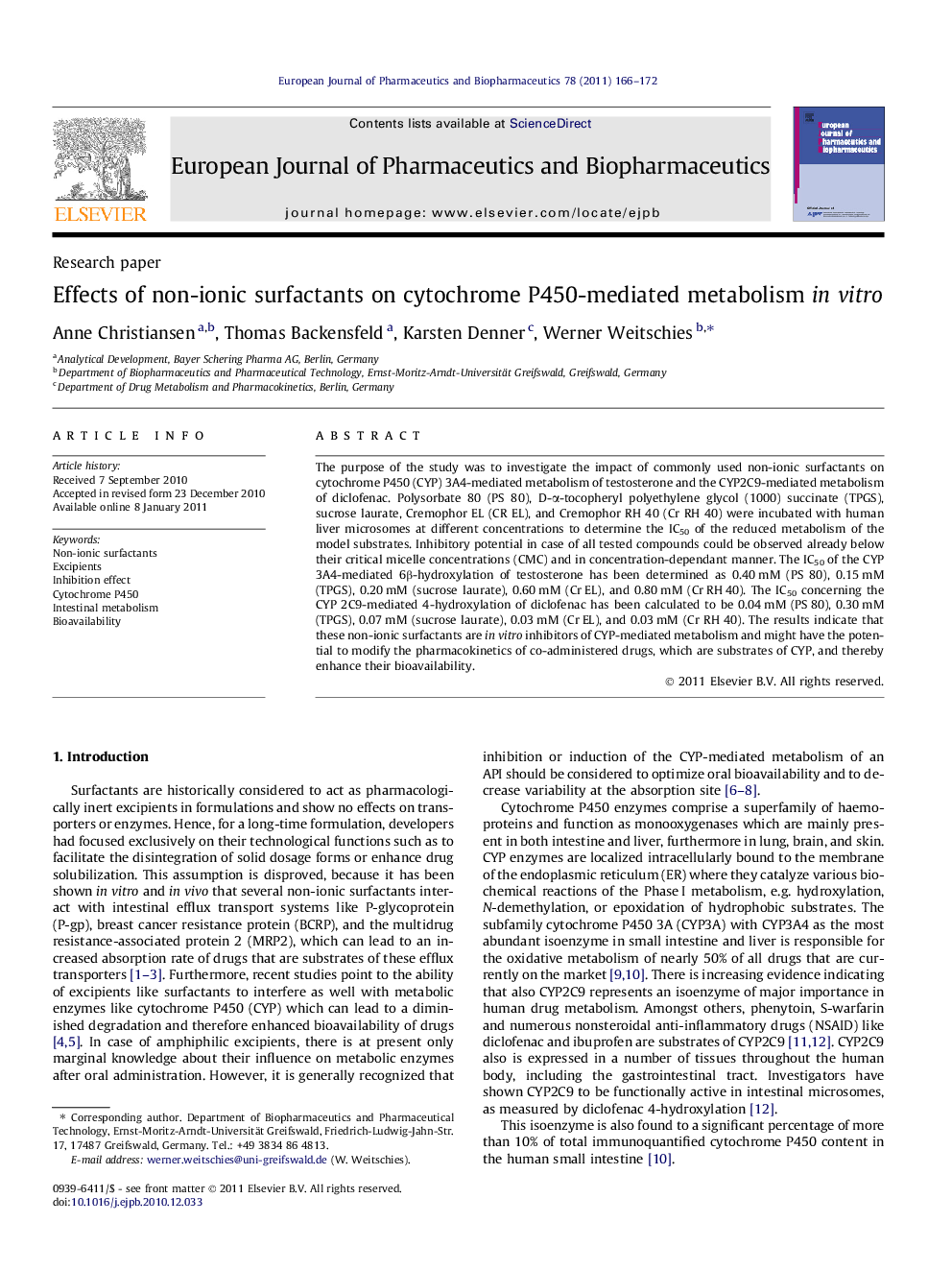| Article ID | Journal | Published Year | Pages | File Type |
|---|---|---|---|---|
| 2084198 | European Journal of Pharmaceutics and Biopharmaceutics | 2011 | 7 Pages |
The purpose of the study was to investigate the impact of commonly used non-ionic surfactants on cytochrome P450 (CYP) 3A4-mediated metabolism of testosterone and the CYP2C9-mediated metabolism of diclofenac. Polysorbate 80 (PS 80), D-α-tocopheryl polyethylene glycol (1000) succinate (TPGS), sucrose laurate, Cremophor EL (CR EL), and Cremophor RH 40 (Cr RH 40) were incubated with human liver microsomes at different concentrations to determine the IC50 of the reduced metabolism of the model substrates. Inhibitory potential in case of all tested compounds could be observed already below their critical micelle concentrations (CMC) and in concentration-dependant manner. The IC50 of the CYP 3A4-mediated 6β-hydroxylation of testosterone has been determined as 0.40 mM (PS 80), 0.15 mM (TPGS), 0.20 mM (sucrose laurate), 0.60 mM (Cr EL), and 0.80 mM (Cr RH 40). The IC50 concerning the CYP 2C9-mediated 4-hydroxylation of diclofenac has been calculated to be 0.04 mM (PS 80), 0.30 mM (TPGS), 0.07 mM (sucrose laurate), 0.03 mM (Cr EL), and 0.03 mM (Cr RH 40). The results indicate that these non-ionic surfactants are in vitro inhibitors of CYP-mediated metabolism and might have the potential to modify the pharmacokinetics of co-administered drugs, which are substrates of CYP, and thereby enhance their bioavailability.
Graphical abstractNon-ionic surfactants like polysorbate 80 inhibit the CYP3A4 mediated hydroxylation of testosterone and the CYP2C9 mediated hydroxylation of diclofenac.Figure optionsDownload full-size imageDownload as PowerPoint slide
